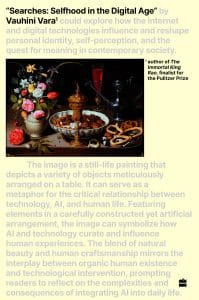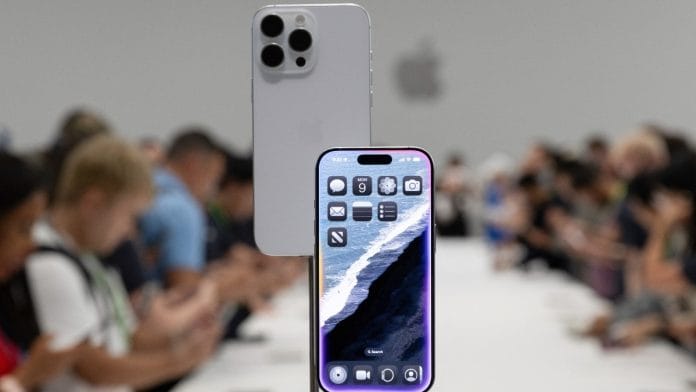One can interpret the human talent for imagining and reimagining, from one generation to the next—the quality that led to the mixture of the first known paint 100,000 years ago—as the talent that brought about religions, then cities, states, and societies, then empire, then capitalism, then technological capitalism (and what Shoshana Zuboff calls surveillance capitalism). Steve Jobs was most celebrated for his aesthetic genius, but his genius at learning from others was just as important to Apple’s success, if not more so. He adapted at least some of the ideas behind the iconic Macintosh computer, released in 1984, from Xerox, which he’d toured several years earlier.
I was aware of his famous quotation gesturing at the notion that the computer had been built on other people’s innovations: “It comes down to trying to expose yourself to the best things that humans have done and then try to bring those things into what you’re doing. I mean Picasso had a saying—he said, good artists copy, great artists steal. And we have always been shameless about stealing great ideas”. I was aware, too, that Jobs’s most recent invention, the iPhone, was not the first touch-screen phone; before it, there had been IBM’s Simon (where you could drag a stylus on a phone number to dial it), Neonode’s Nim (with a slide-to-unlock feature), and Synaptics’s Onyx (whose volume could be adjusted with a fingertip), to mention several.
The smartphone was Jobs’s invention in the sense in which the table knife was the invention of Cardinal Richelieu, the man credited for coming up with it, despite having been preceded by millions of years in evolution of knifelike tools. After I turned down the Apple beat, The Wall Street Journal, to my surprise, gave me a gift. Cathy Panagoulias, the editor in charge of staffing the paper, had been an early mentor of mine; as it happened, she, too, planned to leave after Murdoch’s acquisition, and on her way out she signed paperwork to grant me a two-year leave of absence so that, after finishing graduate school, I could return to my job. In the summer of 2008, my then-boyfriend—the writer with the flip phone—drove me to lowa City with a couple of suitcases’ worth of belongings, which I moved into a large one-bedroom apartment I had rented for $575 a month, including utilities, in a pretty white house with a porch.
In leaving the Journal, I’d given up my work-issued BlackBerry, which left me, like my boyfriend, with only a scratched-up, palm-sized flip phone. I didn’t have an internet connection at home; to get online, I would pick up a neighbor’s signal or bike to the library or a coffee shop. I took photographs on a camera, which I hooked up to my computer with a cable so that I could upload them to a website that would send me prints in the mail a couple of weeks later. When it came time for me and my classmates to share drafts of our fiction with one another, wed print copies using a computer in the building that housed our writing program, then slip them into narrow wooden cubbyholes, each labeled with a classmate’s name, which reminded me and my friends, pleasantly, of where we hung our coats in kindergarten. I didn’t have a car and didn’t really need one; I biked or walked everywhere. Early on, I’d emailed some editors at the Journal, telling them I might pitch them freelance stories from time to time. It never happened. My life in graduate school was all so gloriously tangible and sensate. With some distance from my coverage of Silicon Valley, I began writing short stories about—as I’d promised in my personal statement—everyday people. And then, with some more distance, I began a novel. It was about the son of an Indian coconut farmer, born like my own father around the time of India’s independence, who moves to the United States in the 1970s and founds a computer startup. He calls it Coconut.
I’d be hypocritical not to acknowledge that the creative instinct that motivated Steve Jobs’s conceptual thefts isn’t so different from the one that motivated my own conceptual thefts in my novel, starting with naming a computer startup after a fruit. It recalls the ancient paint-making practice discovered in Blombos Cave, which must have evolved over generations. It occurs to me that the people who taught themselves to mix paint 100,000 years ago might be seen one of two ways: as the world’ s first known artists’ collective, or as the world’ first known extractive industry. While the purpose of the paint is lost, I imagine people stroking it onto the walls or onto their own skin and feeling powerful and maybe a little startled by that power, as if they’d conjured blood. But I’m probably projecting; this is how I feel when I’m writing well. A CEO might have a different guess. A National Geographic headline about the workshop called it the world’s oldest “art studio”; a BBC headline described it as a “paint factory”.
But maybe it was both. Maybe art and extraction, communication and domination, were always interdependent. While writing my novel, I understood a piece of literature and an iPhone to be outgrowths of the same primitive human quality that makes us different from other animals: a deeply communal imagination and resourcefulness. I stood to gain a short-term windfall of thousands of dollars at best, by creating, with my own mind and hands, a work of art. Jobs was the CEO of one of the world’s most powerful corporations, which stood to gain a constant revenue stream in the billions of dollars by building, through the exploitation of labor and commodities, a product. I would have liked to position my work and Jobs’s as existing on opposing poles of any continuum. But this would have relied on a superficial reading of the situation.
 This excerpt from Vauhini Vara’s ‘Searches: Selfhood in the Digital Age’ has been published with permission from HarperCollins.
This excerpt from Vauhini Vara’s ‘Searches: Selfhood in the Digital Age’ has been published with permission from HarperCollins.







Tell us you’ve never used early smartphones with laggy touch inputs without telling us.
Pls find better writers, this smells like an iPhone hater projecting.
Why would I support a print tjta says somebody stealing somering when you arw not the first to offer such an opinion and usinh a medium that is not ” yours” GoodLuck” to your survival. NOT
This is such a silly take. As someone who was aware and had used many contemporary touchscreen phones, before the iphone came along, everything else was burdensome to use , which is why they didn’t sell well. Steve Jobs and company made it usable, delightful even, and this was no trivial feat, given that many other companies, including Palm and Microsoft had worked on the touchscreen idea for maybe half a decade without producing anything compelling. The iphone in 2007 created the paradigm that every smartphone for almost 2 decades has followed, which should tell you everything about what a big deal it was.